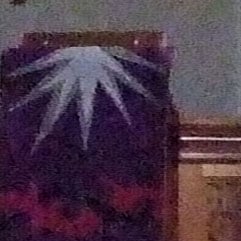Panasonic Lumix DMC-TZ7 / ZS3
-
-
Written by Gordon Laing
Panasonic TZ7 / ZS3 vs Canon 100IS / SD780IS vs Fuji F60fd Hi ISO Noise
|
 |
To compare noise levels under real-life conditions we shot this scene with the Panasonic Lumix TZ7 / ZS3, Canon IXUS 100 IS / SD780 IS and Fujifilm F60fd within a few moments of each other using each of their ISO settings.
The lenses on each camera were adjusted to deliver the same field of view, as much as their coarse zoom steps would allow.
The image to the left was taken with the Panasonic Lumix DMC-TZ7 / ZS3 at a sensitivity of 80 ISO, with the lens set to 6mm (37mm equivalent); the exposure was 0.77 secs at f3.5 and the original 10M Fine JPEG file measured 4.61MB. The crops are taken from an area in the centre and presented at 100%. The Lumix TZ7 / ZS3 crops show a slightly larger area because of its slightly lower effective resolution than the other two models on test here.
The Panasonic Lumix TZ7 / ZS3 and Canon IXUS 100 IS / SD780 IS kick-off the sequence at 80 ISO, where both cameras deliver good-looking, detailed images. You can also see how Canon’s adopting a punchier approach to image processing with higher sharpening and contrast – arguably a little too much of both, but it certainly does deliver the vibrant images many people like from a compact. Pixel peepers will however notice a very faint smattering of noise in the background of both crops – it’s very subtle and unlikely to bother anyone, but neither can be described as completely clean even at their lowest sensitivities.
This noise texture becomes more apparent at 100 ISO, although all three cameras (now including the Fuji) are recording lots of detail. At 200 ISO, the noise textures have become clearer and while all three are already showing slightly different strategies to tackling it, there’s nothing to recommend one over another.
With the sensitivity at 400 ISO, all three cameras are visibly suffering more, although in different areas. The Canon’s showing more noise in the upper right grey area than the Panasonic, but the Panasonic is losing more tonal detail on the purple cloth. At 800 ISO there’s a large drop in quality across the board with all three models looking quite mushy. Canon’s noise reduction is smearing out speckles in the background and on the wooden carving, but there’s plenty of patchy artefacts on the material.
At 1600 ISO, the Panasonic and Fujifilm crops show a significant increase in visible noise, and it’s at this point the Canon chooses to really kick-in the noise reduction, eliminating most speckles, but smearing away fine detail with it. At 3200 ISO, the resolution is reduced on all three, although Fujifilm bravely records the largest image at 6 Megapixels – none are pretty though. The F60fd then goes onto offering a 6400 ISO mode at 3 Megapixels, but these higher settings really are for emergency use only.
In our view though there’s no clear winner or loser in this group. Like most compacts these days, there’s evidence of noise artefacts even at the lowest sensitivities if you’re looking for it, and for the best results you should aim to stick at 200 ISO or below. 400 ISO is acceptable for smaller prints or less critical results, but 800 ISO and up are best reserved for online or emergency use. Now head over to our Panasonic Lumix DMC-TZ7 / ZS3 Gallery to see some more real-life shots in a variety of conditions.
UPDATE: We have new comparisons between the TZ7 / ZS3 and Canon’s PowerShot SX200 IS here.
Panasonic Lumix DMC-TZ7 / ZS3 |
Canon IXUS 100 IS / SD780 IS |
Fujifilm FinePix F60fd | ||
 |
 |
 | ||
80 ISO |
80 ISO |
80 ISO not available | ||
 |
 |
 | ||
100 ISO |
100 ISO |
100 ISO | ||
 |
 |
 | ||
200 ISO |
200 ISO |
200 ISO | ||
 |
 |
 | ||
400 ISO |
400 ISO |
400 ISO | ||
 |
 |
 | ||
800 ISO |
800 ISO |
800 ISO | ||
 |
 |
 | ||
1600 ISO |
1600 ISO |
1600 ISO | ||
 |
 |
 | ||
2000 ISO (at 3 Megapixels) |
3200 ISO (at 2 Megapixels) |
3200 ISO (at 6 Megapixels) | ||
 |
 |
 | ||
Conditions wouldn’t allow 6400 ISO |
6400 ISO not available |
6400 ISO (at 3 Megapixels) |





